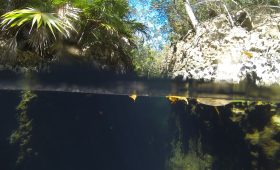Exploring the Blue Mountains, Jamaica
The Blue Mountains in Jamaica offer a captivating blend of natural beauty, rich history, and vibrant culture. This region is a paradise for nature enthusiasts and adventure seekers, with its towering peaks and lush valleys. Here’s a guide to help you navigate this remarkable destination.
Unique Features of the Blue Mountains
The Blue Mountains are renowned for their incredible biodiversity. The area is home to over 800 species of endemic plants, including the Jamaican bamboo, which flowers once every 33 years. Wildlife enthusiasts can spot the endangered Jamaican swallowtail butterfly and the Jamaican boa. Birdwatchers will find this region particularly appealing, as it hosts 200 species of resident and migratory birds.
Another highlight is the world-famous Blue Mountain coffee. The coffee plantations, primarily located on the mountain slopes, offer tours where you can learn about the meticulous process of coffee production. The coffee’s exceptional flavor and aroma make it a favorite among connoisseurs worldwide.
Historical Significance
The Blue Mountains played a significant role in Jamaica’s colonial history. Early Spanish settlers established cattle ranches at the foot of the mountains, and later, the English cleared the lower slopes for farming and timber. Today, you can explore the remnants of old plantation houses and coffee estates, gaining insight into the region’s past and the impact of slavery.
The Blue Mountain and John Crow Mountain National Park, established in 1992, preserves some of the remaining forests and protects the island’s largest watershed. This park covers about 6% of Jamaica’s landmass and offers stunning views and educational opportunities about the local flora and fauna.
Best Time to Visit
The ideal time to visit the Blue Mountains is during the dry season, from December to April. During these months, the weather is generally clear, making it perfect for outdoor activities and hiking. However, the region’s cool and misty climate means you should pack layers and a rain jacket, regardless of the season. Birdwatchers should consider visiting between January and March to catch the migratory birds.
Getting There
Reaching the Blue Mountains is straightforward. From Kingston, you can drive along the A4 highway, which offers breathtaking views. Public transportation is also available; take a bus or shared taxi from Kingston to Papine, then a local bus to the mountains. For the adventurous, hiking to the summit with a guide is an option.
Local Transportation
Once in the Blue Mountains, exploring is best done with a local guide who can lead you to the best trails and scenic spots. Several tour companies offer guided tours, providing transportation and insights into the area’s history and culture. Alternatively, you can rent a car or bicycle to explore at your own pace.
- The Blue Mountains boast over 800 species of plants and animals.
- Blue Mountain coffee is a globally recognized gourmet product.
- The dry season, from December to April, is the best time to visit.
- Access the mountains by car, bus, or hiking.
- Explore locally by hiring a guide, joining a tour, or renting a vehicle.
With this information, you’re well-equipped to plan your visit to the Blue Mountains, Jamaica. Whether you’re drawn by the natural wonders, historical sites, or the allure of Blue Mountain coffee, this destination promises a memorable experience.




